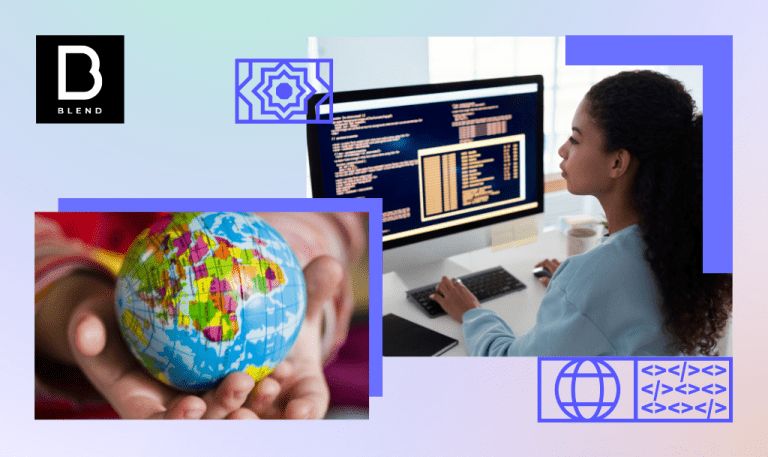
10 Best Software Localization Services: What to Look for in 2025
In recent years, there’s been a seismic shift toward global-first software. Localization services are a crucial tool for adapting software to meet the needs of multilingual users and align with cultural expectations. While translation plays a central role in localization, ensuring everything from onboarding guides to help pages is adapted for the linguistic preferences of a new audience, the best software localization services go far beyond the scope of pure translation.
Why Software Localization Services Are Critical in 2025
Along with translation, software localization services ensure that software and apps are culturally appropriate for new users. Everything from payment methods and currency information to reading direction and image assets is tailored to specific audiences. Interface localization is also important, with key UI elements like menus and labels adapted to provide a more native experience for end users.
In short, localized software makes it easy to convey your message while honoring the language and messaging requirements of new users, all the while maintaining accuracy when it comes to UI essentials. Handling localization internally is resource-intensive and often out of the reach of many companies. However, the best software localization services provide fast, accurate, and scalable solutions that can deliver perfectly localized products with ease.
What to Look for in the Best Software Localization Services
When choosing a software localization service provider, you need to think beyond available language pairs and competitive pricing. To ensure you’re making the right choice, you’ll need to consider key features and capabilities when selecting a suitable provider.
Linguistic Quality and Industry Expertise
When choosing a software localization services provider, you need to be confident that they have relevant industry experience before signing over your project. Experience with software localization alone isn’t sufficient. In an ideal world, a services provider will have direct experience working with clients that occupy a similar field to you.
What’s more, linguistic quality is important. Translation plays a central role in any successful localization project, and a suitable partner needs to be able to deliver the goods. Make sure they’re fully versed in working with the language pairs you’re looking to target.
Agile and DevOps Integration
When working with software localization providers, you need to be confident that the tools they’re using will integrate with the systems you’re using. Whether it’s content management systems or software you depend on to facilitate workflows, integration is key to any software localization project. Effective integration can dramatically streamline everyday processes while allowing for easy data transfer between different platforms.
Translation Memory and Glossary Management
Translation tools like translation memory are a staple of the localization process. With translation memory at your disposal, you can make automatic translations based on previously translated terms and segments. This can significantly alleviate the burden on translators while also improving consistency across the board.
Glossary management tools can also aid the translation process, providing translators with an extensive cross-referencing resource for checking pre-approved terms and phrases. Once again, glossary management improves consistency and is a vital tool when dealing with technical translations and extremely specific language.
Multilingual UI/UX Testing Support
For the best localization results, look for localization services that provide multilingual UI/UX testing support as standard. With these testing tools, you’ll be able to check all UI elements for functionality, ensuring they’re culturally relevant, contextually accurate, and more.
Automation and AI Translation Features
If you’re working to a tight timeline, automation can dramatically move things along. Look for a software localization services provider that utilizes automation features like AI translation to help speed up processes and confidently achieve deadlines. Machine translation tools are becoming increasingly reliable, and, when compared with human linguists, can prove a reliable solution when attempting to hit localization goals.
Scalability and File Format Compatibility
When it comes to localization, it’s almost certain that the scope of your project is going to grow beyond initial expectations. Should you experience success in one territory, you may quickly decide to repivot and target a new one. The best localization services need to be able to accommodate this, with tools that can scale to meet new project demand and increasingly complex projects.
You also need to consider file format compatibility. With any given localization project, you’ll be dealing with all manner of file formats, from basic text file formats to software resource files. You’ll need a solution that can handle all of them as you localize content, negating the need for a suite of different tools to fulfill a single function.
Customer Support and Global Availability
Once a localization project has been delivered, you’ll still need insights and support from time to time. When choosing a localization services provider, make sure reliable customer support comes as standard. The same goes for global availability, with a solutions provider that’s on hand to support you in your mission, wherever in the world you’re operating.
Pricing Transparency and Licensing Flexibility
Cost can play a big role in the localization services provider you choose. Are you looking for the flexibility afforded by a subscription-based provider? Perhaps you’re working with a tight budget and prefer the certainty of a one-time purchase model. Whatever pricing model you go for, make sure it’s right for your company, your localization project, and that it covers all the features you’re looking for.
The 10 Best Software Localization Services in 2025
Planning a localization project and need to bring in external resources to get the job done? Below, we’ll take a closer look at 10 of the best software localization services in the business to help you make your decision.
1. BLEND
If you’re looking for an all-in-one localization service with deep tech integrations and global reach, BLEND is the obvious choice. Offering a suite of AI-enabled tools, you can truly leverage the power of automation with BLEND, making it an ideal partner if you’re looking to undertake large-scale localization projects and don’t want to overwhelm your in-house team. However, BLEND doesn’t rely on AI tools alone. Thousands of expert linguists speaking more than 120 leading languages are on hand to streamline translations, leaving you with quality results every time.
It’s not just text that’s localized here, either. With BLEND, you’ll be able to localize all your assets, including imagery, audio, video, and interactive multimedia. Perfect if you’re looking for a localization services partner looking to complete entire projects, rather than just make a start with translation. An intuitive dashboard provides you with an at-a-glance overview of your usage and budget information, while a user-friendly control center lets you communicate directly with linguists, delve into the specifics of your projects, add services as required, and connect to hour help desk, eCommerce platform, or CMS with ease.
2. Transifex
If you’re undertaking a localization project where your dev teams need access to real-time updates and seamless integrations, Transifex is a smart choice. Its interfaces are both streamlined and user-friendly, making quick work of the localization process. Thanks to dozens of integrations, there’s also scope for automation here, which can significantly speed up your workflows. What’s more, flexible pricing plans mean you can take advantage of monthly and annual plans. Perfect if you’re looking for a scalable solution.
On the flipside, Transifex might seem too limiting for those who are looking for a full-scale localization solution. Machine translation tools are useful, but there’s still a limit to what they can do. Meanwhile, it’s largely focused on more simplistic bodies of text, rather than creative content. Additionally, while flexible pricing plans are always welcome, Transifex might be out of the budget of smaller businesses.
3. Lokalise
If you’re in the market for a cloud-based localization solution, Lokalize is worth a second look. Designed with mobile apps and agile workflows in mind, Lokalize boasts a user-friendly interface that makes it a good choice for the beginner, while powerful AI translation tools and seamless integrations make it an ideal option for large-scale localization projects. Glossary management and translation memory tools ensure consistency across the board, while AI-based quality assurance helps uphold high levels of accuracy.
The downside here is that you’re bound by all the limitations of a cloud-based solution. In short, you can only localize while you’re connected to the internet. There’s also a distinct lack of collaboration tools on offer here. All the basics are present and accounted for, but Localize falls short when it comes to more robust features that interdepartmental teams depend on. Furthermore, Lokalize is a fairly expensive option. The entry-level plan is affordable enough, but you’ll be locked out of essential tools like glossary management and translation memory.
4. Smartling
If you want to unlock the power of AI-powered translation automation, Smartling is one of the better localization tools out there. This is a translation management system that has plenty going for it, allowing you to centralize workflows, make use of countless integrations, and target a wide range of language pairs. Despite its localization potential, Smartling still manages to be fairly accessible, with a user-friendly interface that won’t alienate the beginner. Excellent customer support also means you won’t be waiting around for ages for feedback on everyday questions and queries.
The drawbacks? Well, Smartling’s raft of features does come with a learning curve. If you want to be able to unlock the true potential of this localization software, you’ll need to be prepared to undertake some learning. There’s also less support for uncommon languages, while smaller businesses may be put off by the cost of even the most entry-level plan.
5. Phrase
Here’s another cloud-based solution to consider if you’re looking to simplify the localization process. Unlike other more complex systems, Phrase is designed with user-friendliness in mind, with a simplified solution that will suit the beginner. Scalability also comes as standard, making it ideal for businesses looking to start small but move on to broader and better things down the line. Extensive translation management tools make it a worthwhile contender, while advanced collaboration tools make it perfect for projects hinging on interdepartmental teams.
However, to get the most out of Phrase, be prepared for something of a learning curve. There’s a significant suite of features here, and while they’re all useful, you’ll need to commit to the software to make full use of them. What’s more, Phrase arguably falls short when it comes to reporting and analytics, making it a limited option for localization projects with big goals.
6. Memsource
Large-scale localization projects call for full-featured localization tools, and Memsource certainly fits the bill on paper. This cloud-based tool is loaded with machine translation features that make localization simple, with reliable translation memories on hand to streamline workflows. It’s also fairly intuitive, making it a good fit for the beginner, while excellent terminology management features are on hand to guarantee consistency. There are also some fairly impressive project management features on offer here, with a suite of handy tools to aid collaboration, project tracking, and more.
However, if you rely on multiple tools and software solutions, using Memsource can prove challenging, with users reporting a spate of integration issues. While designed with the enterprise-level user in mind, it can also come undone when handling large-scale projects, with noticeable impacts on speed and efficiency. Memsource is also limited if your workflows are particularly complex, making it unsuitable for projects with multiple stages.
7. POEditor
This localization management platform should suit the needs of those looking for a user-friendly interface and reliable terminology support. In addition to advanced tools like translation memory, you’ll find glossary management services and project tracking tools. File format compatibility is also not a problem with POEeditor, allowing for seamless integration with all manner of systems and development tools.
While POEditor can help streamline the localization project, it’s best reserved for companies with a strong in-house development team. You’ll need such insights to get the most out of this localization software, with the overall feeling rather lightweight without it.
8. Crowdin
Designed with small companies and enterprise-level clients alike, Crowdin is a localization management platform with a surprisingly versatile suite of tools. You’ll find essential features like translation memory and glossary management, alongside collaboration tools that allow your teams to work in real-time. Perfect if you’re looking to expedite agile workflows.
However, while Crowdin is perfect for collaborative projects and open-source teams, it’s not without its drawbacks. There’s some inconsistency between the basic version and the enterprise-level alternative, with the latter being a little confusing for translators. Other users have reported that too many comments are added to translations, while onboarding tutorials and guides could do with an update.
9. Localize
Boasting quick setup and effortless integration with multiple web platforms, Localize is one of the more user-friendly localization services on the market. The user interface is particularly accessible, allowing translators to make updates quickly. This intuitive functionality is ideal if you’re looking to streamline your workflows. Seamless integrations also make Localize a winner, with this software effortlessly integrating with platforms like WordPress.
However, Localize isn’t without its problems. Automated translations aren’t successful across the board, with some language pairs fairing better than others. You’ll also encounter some issues if you’re looking to localize content beyond text, meaning it’s not ideal for a full-circle localization solution. Finally, Localize is fairly expensive for what you get.
10. Smartcat
Another cloud-based translation tool, Smartcat presents itself as a user-friendly choice for brands looking ot undertake a localization project. An intuitive dashboard makes it a good choice for the beginner, but there’s plenty for the experienced user to make use of here as well. Because it’s a cloud-based solution, there’s no need for complex installations, while users benefit from a complete translation environment. Translation, editing, project management, and more are all encompassed within the scope of the platform.
While free to use and accessible, Smartcat does fall short in a few areas. Although it’s a cloud-based solution, it does lack a mobile app, limiting its project management capabilities. There are also a lot of superfluous features here. At times, it can feel overwhelming for new users, especially those new to the field of localization. Finally, customer support is sorely lacking, while technical issues have been known to affect functionality.
Take Charge of Localization with the Best Localization Services
Choosing the right software is integral to the success of any localization project. You’ll need something that delivers when it comes to industry-leading expertise and linguistic quality, not to mention agile and app integration. You’ll also need standard localization tools and features like translation memory and glossary management to excel, while scope for automation and AI translation will help speed up your workflows considerably. If this is only the first step in your localization efforts, you’ll also want a scalable solution.
At BLEND, you’ll find all this and more. With a range of solutions designed to cater to the needs of smaller businesses and enterprise-level organizations alike, we can help make quick work of the entire localization process. Looking for a software provider that combines the power of AI with human linguists?
At BLEND, we offer a single-source solution that brings together industry-leading AI-enabled solutions with some of the most experienced human translators around. You’ll also find a complete suite of localization services, meaning you don’t just have to settle for localized text when you choose to partner with blend. What’s more, our control center simplifies the entire process, letting you see every detail of your project, delve deep for important insights, choose service levels, communicate with linguists, and much more.
Why not discover more about our localization and translation solutions online today? Alternatively, get in touch with the team to see how we can help you.
Need fast, high-quality translation?
Translate nowWhat our customers are saying






